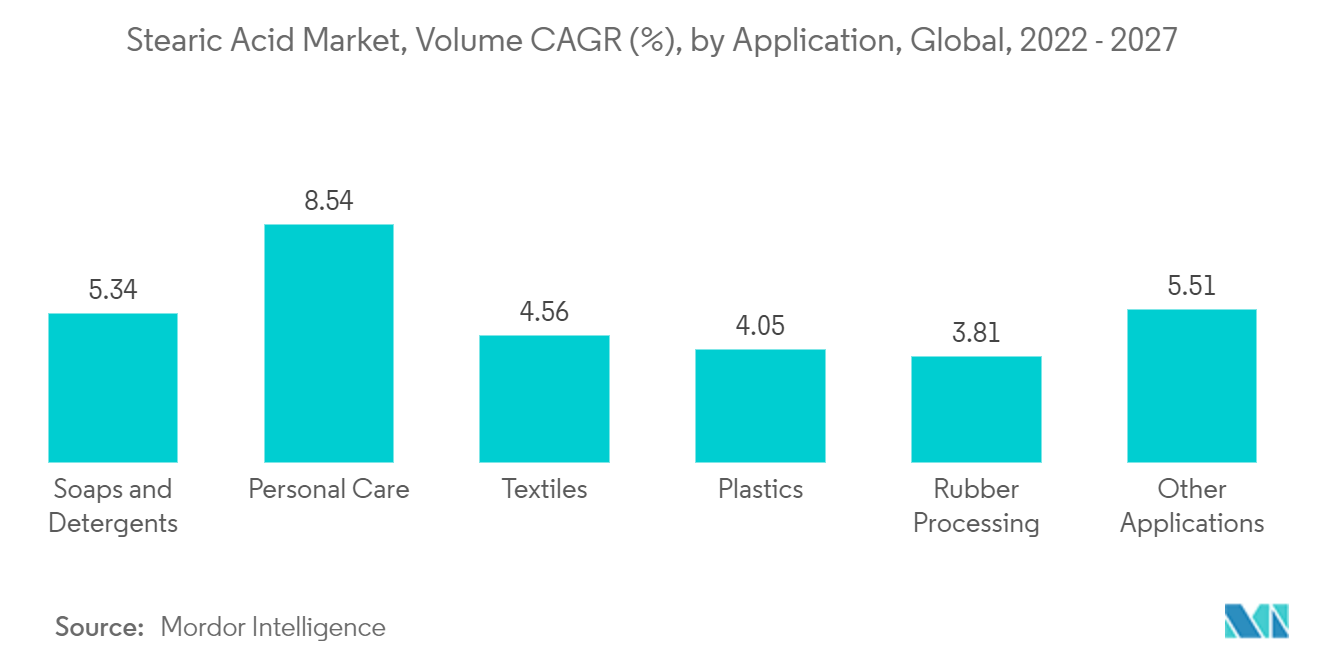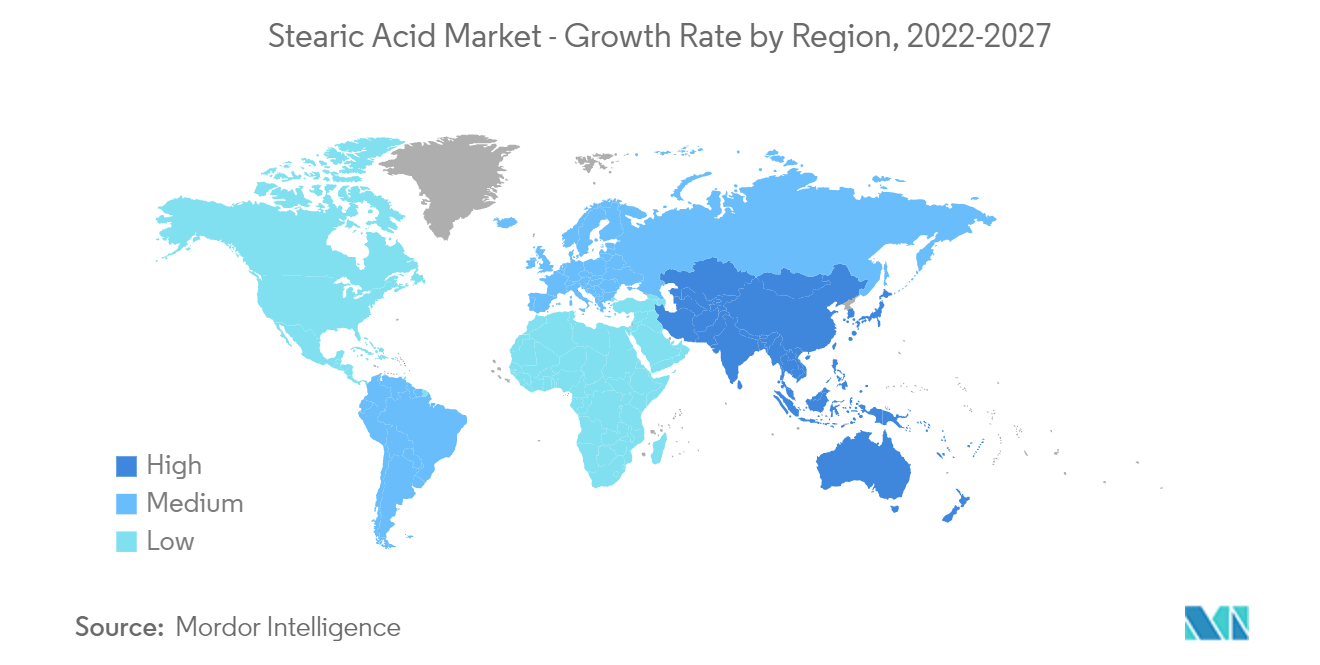Market Trends of Stearic Acid Industry
This section covers the major market trends shaping the Stearic Acid Market according to our research experts:
Increasing Demand from the Personal Care Industry
- Stearic acid is used for the production of stearates, such as sodium stearate, magnesium stearate, or calcium stearate, a component of personal care products. It is used in more than 3,200 skincare and hair care products.
- Furthermore, the growing awareness of personal health and hygiene and increasing beauty consciousness are expected to drive the demand for stearic acid.
- In 2022, the value of the global beauty and personal care market amounted to over USD 534 billion. Moreover, the market is estimated to grow at a CAGR of around 5.86% during the forecast period, which will favor the market studied.
- According to Cosmetic Europe, the personal care association, Europe's 500 million consumers use cosmetic and personal care products every day to protect their health, enhance their well-being, and boost their self-esteem, ranging from antiperspirants, fragrances, make-up, and shampoos to soaps, sunscreens and toothpaste, and cosmetics.
- The UK natural beauty market is estimated to reach EUR 208.6 million (~ USD 214.14 million) in 2022. Natural cosmetics industry statistics show that the market is expected to keep growing at an annual rate of 7.51% between 2022 and 2026. These goods become more popular as consumers become more concerned about the environmental and health implications of these substances.
- Therefore, the increasing demand from the personal care industry is expected to impact the market in the coming years.

Asia-Pacific Region to Dominate the Market
- Asia-Pacific was the leading consumer of cosmetics and personal care products due to growing urbanization and the increasing population of the younger generation in countries like China, India, Japan, and other developing nations.
- Stearic acid has a large number of applications in soaps and detergents. It primarily fulfills the role of a thickener and hardener, which helps soap bars retain their shape. Stearic acid helps soap particles attach to dirt particles, loosening them to be washed away with water.
- Leading global giants in the region, such as L'Oreal, Procter & Gamble, and Unilever, supports the Asia-Pacific market.
- With various research and developments, expansions, and investments in cosmetic products, the market for stearic acid is expected to grow significantly in the region during the forecast period.
- According to the International Trade Organization, China is the second-largest market for cosmetic and personal care. The retail sales value of cosmetics in China rose to USD 52.3 billion in 2020. Furthermore, overall cosmetics sales in 2022 is anticipated to surpass USD 70.1 billion and witness an annual growth rate of 9.6%.
- As per invest India, India's market for cosmetics and personal care products is currently worth USD 26.8 billion and is projected to increase to USD 37.2 billion by 2025.
- According to the Ministry of Economy, Trade, and Industry (METI), the size of Japan's cosmetics and personal care products market was over USD 35 billion in 2021, making it the world's third-largest after the United States and China. Japan is home to more than 3,000 beauty care companies, including global brands of Shiseido, Kao, Kosé, and Pola Orbis.
- The aforementioned factors are expected to significantly impact the market in the coming years.


